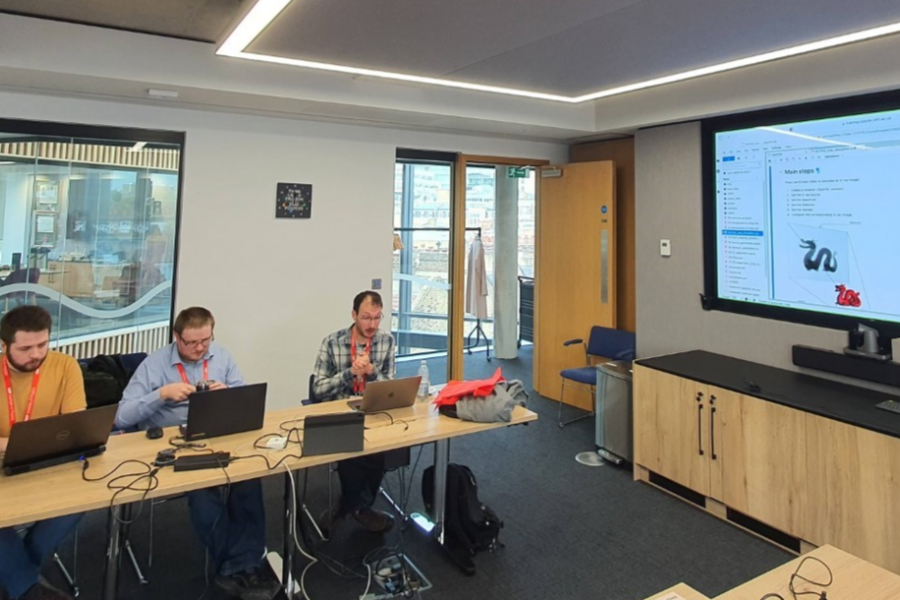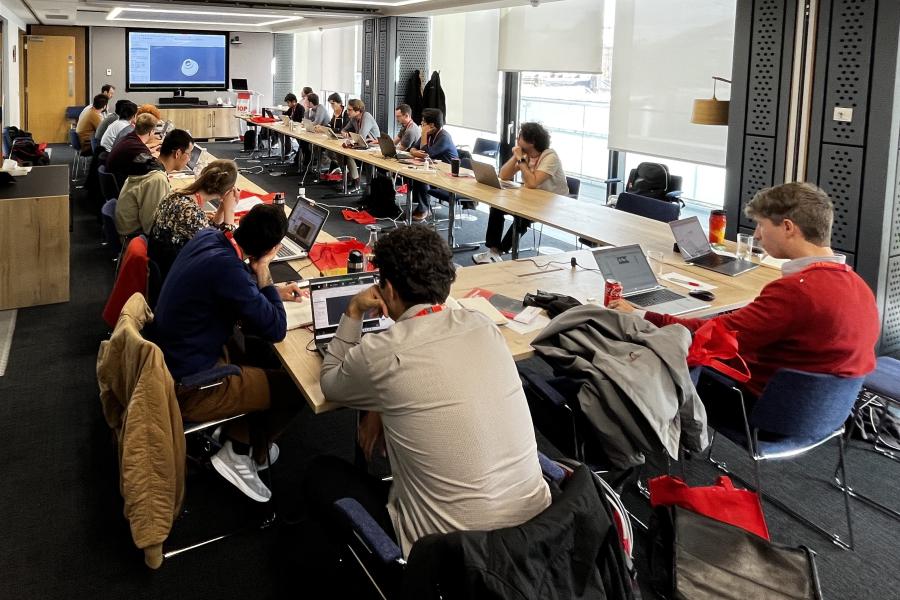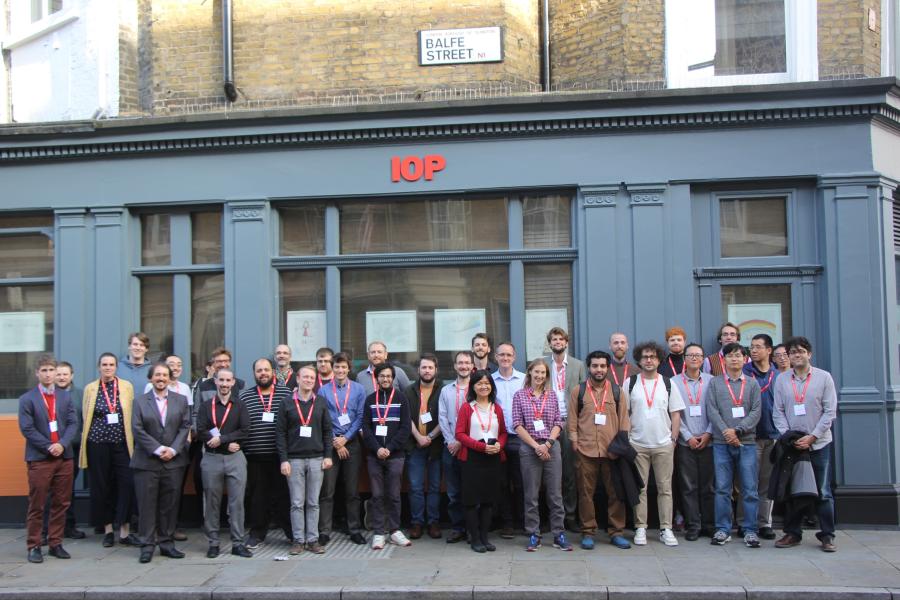The Image-Based Simulation for Industry (IBSim-4i) conference is an annual 5-day event. This year it was held at the Institute of Physics (IoP) from the 17th to 21st of October 2022.
Dr Franck Vidal (Senior Lecturer in Computer Science at the School of Computer Science and Electronic Engineering) led the tutorial, explained about the conference.
X-ray computed tomography (XCT) is a popular NDT (Non-Destructive Testing) technique for visualising the interior of solid objects. It is the same technique as CAT scanners in hospitals). While 3D imaging is increasingly used in the industrial sector for inspection, non-destructive testing / evaluation (NDT/NDE) and metrology, image-based simulation (in general) is still an underutilised. There are many opportunities for its use. Consequently, I led the development of the gVirtualXray library -- to give researchers the ability to create their own x-ray simulations.
Franck went on to say:
"Being Open-Source it is available for anyone to use. The gVirtualXray library has been used by researchers around the globe. By medical people, creating Virtual Reality systems for training, medical physicists have designed new diagnostic imaging techniques, people have used it to create Artificial Intelligence systems that detect the length of potato chips that are contained in bags, even to teach particle physics. To cite a few examples.”
Different days of the IBSim-4i workshop
The first two days of IBSim-4i correspond to user training of the various techniques required for image-based simulation. Dr Vidal led a team of researchers from Bangor and Swansea Universities to teach a group of 25 international researchers how to simulate X-rays. Specifically, the training was to teach participants to create virtual X-ray computed tomography (XCT) experiments. The data generated consists of many X-ray radiographs around the scanned object.


In addition, on the second day, a team from the Science and Technology Facilities Council (STFC, the United Kingdom government agency that carries out research in science and engineering) taught the participants how to reconstruct XCT volumes from the sets of radiographs with the Core Imaging Library (CIL).
Furthermore, Iwan Mitchell (a PhD student at Bangor University) presented the WebCT tool. WebCT is an application that uses the gVirtualXray framework and the Core Imaging Library (CIL). Iwan is funded by the Artificial Intelligence Machine Learning and Advanced Computing (AIMLAC) Doctoral programme. Iwan said
WebCT allows people to upload CAD models, set the experimental parameters of their virtual X-ray scanners, simulate the corresponding radiographs, and reconstruct the CT (Computed Tomography) volume. All without typing a single line of code!
As co-chair of IBSim’s Scientific Committee and coordinator of the user training, it was a delight to see that the training sessions were fully booked. As the developer of the gVirtualXray library, I was honored to give the tutorial. It is extremely rewarding to see how people are planning to use it in their own research. I am excited to see how people use it in the future. Scanning a dense object can take several hours. Finding the right scanning parameters by trial and error is time consuming in this case. The combination of gVirtualXray and CIL makes it possible to estimate the most important scanning parameters ahead of time.


